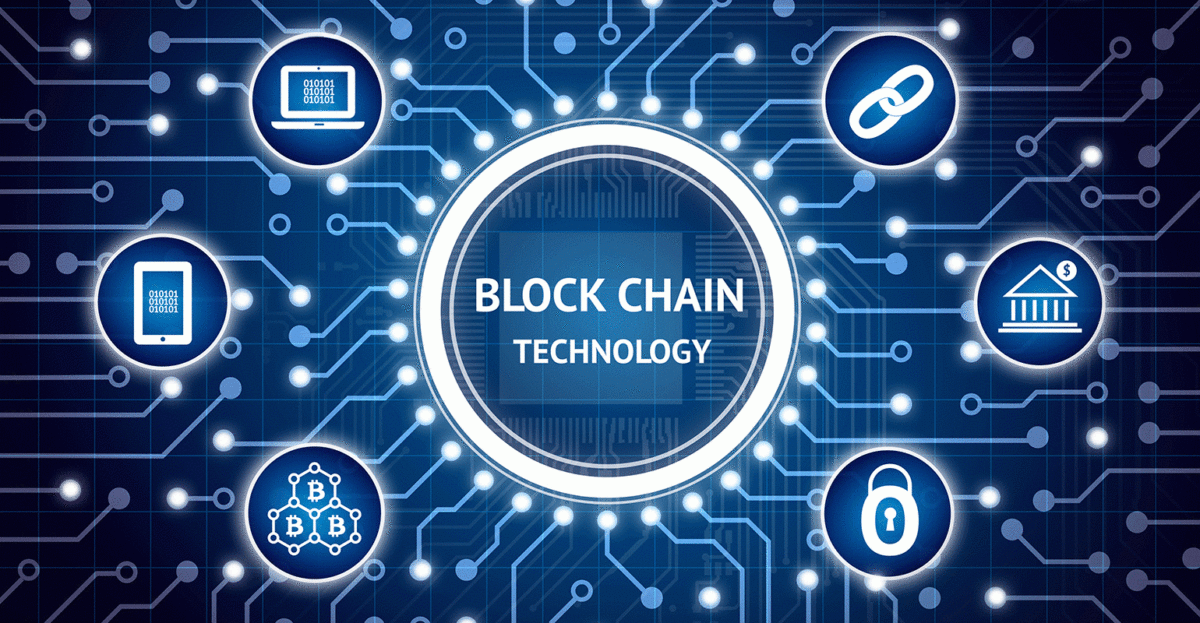Blockchain literally means a chain of blocks, these blocks are digital information stored in public databases known as ‘chains’.
Blocks are made up of digital pieces of information, they have three parts:
- Blocks store information about transactions like date, time, the amount you spent
- Blocks store information about who is participating in transactions, your name may be recorded in a digital signature format like a unique username
- Blocks store information that distinguishes them from other blocks, each block stores a unique code called a hash that allows us to distinguish it from other blocks. Similarly like we humans differ from one another through our names
How Blockchain Technology Works?
When a block stores new data it is added to the blockchain. For a block to be added to the blockchain following things should take place:
-
- A transaction must happen.
- That transaction must be verified, confirmation of the details of the purchase, including the transaction time, amount, and participants (users and vendors).
- That transaction must be stored in a block. The transaction’s purchase details are stored in a block. There, the transaction join thousands of similar blocks
- That block must be given a hash, it must be given a unique code known as a hash. The block is also given the hash of the most recent block added to the blockchain. After getting the hash the block is added to the blockchain.
Also Read: Top 9 Blockchain Platforms That Will Rule In 2021 & Beyond
Once the new block is added to the blockchain, it becomes publicly visible, anyone can view it. Bitcoin’s blockchain has the following information contained in them: transaction data, Time, Height, and by who the block was added to the blockchain.
Every computer in the blockchain network has its own copy of the blockchain, millions of copies of the same blockchain stored in the networks. This makes manipulating the information a very very cumbersome and tedious task to accomplish. To make any changes a hacker would need to modify or manipulate every copy of the blockchain on the network.
Is Blockchain Secure?
New blocks are always stored in linear and chronological order. A new block is always added to the end of the blockchain. In Bitcoin’s blockchain, each block has a position called a height.
Each block contains its own hash, along with the hash of the block before it. These hash codes are created by a math function that turns digital information into a string of numbers and letters. After a block has been added to the end of the blockchain, it is very difficult to change the contents of the block. If the information is edited the hash code changes as well.
To change a single block, a hacker would need to change every single block after it on the blockchain. Once a block is added to the blockchain it becomes very difficult to edit or delete.
Blockchain vs. Bitcoin
The purpose of blockchain technology solution is to allow information to be recorded and distributed without getting modified. After the launch of Bitcoin in 2009, blockchain saw its first real-world application.
When one person pays some purchases using Bitcoin, computers on the Bitcoin network rush to verify the transaction. To do so, users run a program on their computers and try to solve a complex mathematical problem, called a hash. When a computer solves the problem by “hashing” a block, its algorithmic work will have also verified the block’s transactions. The completed transaction is recorded publicly and stored as a block on the blockchain, after which it cannot be manipulated. In the case of Bitcoin, computers that successfully verify blocks are rewarded with cryptocurrency, this is known as bitcoin mining.
Blockchain’s Real-life applications
1. Banking Industry
By implementing blockchain into banks, banks can process consumers’ transactions in very little time, which would otherwise take a few days. Banks can exchange funds between institutions more quickly and more securely.
2. Cryptocurrency
Traditional currencies like the U.S. dollar are regulated by federal banks or the central govt. Under this system, if a user’s bank collapses or they live in a country with an unstable government, the value of their currency may be at risk.
Blockchain allows cryptocurrencies to operate without the need for a central authority. This reduces the risk of the sinking of users’ money, especially in countries with unstable currencies a more stable currency, individuals and institutions can do the business in a better manner.
Also Read: Role of Blockchain Technology in fixing security problems of IoT
3.Healthcare
Health care providers can reap the benefits of blockchain to securely store their patients’ medical records. When a medical record is generated and signed, it can be written into the blockchain.
4. In the electoral process
Each vote is be stored as a block on the blockchain, making them nearly impossible to tamper with. The blockchain protocol maintains transparency in the election process thereby eliminating any chances of fraud.
Advantages of Blockchain
-
-
- Improved accuracy by eliminating human involvement in the verification process
- Cost reductions by eliminating third-party verification
- Hard to tamper with the information
- Transactions are secure, private, efficient, and fast
- Transparent trusted and verified technology
-
Disadvantages of Blockchain
-
-
- Significant technology cost associated with bitcoin mining
- Low transactions per second
- Notorious for being used in illicit activities
- Vulnerable to hacking
-
Our expert team members at NEXT BIG TECHNOLOGY have vast experience in Blockchain technology, we have been using it in website development, website maintenance. We have deployed Blockchain technology in our financial, healthcare-related, enterprise solutions related IT projects for our clientele.


















